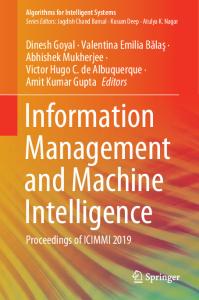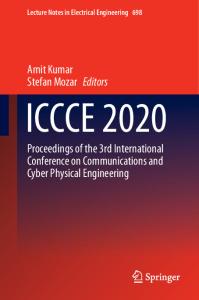A Comparison of Set Redundancy Compression Techniques
- PDF / 3,924,735 Bytes
- 13 Pages / 600.03 x 792 pts Page_size
- 20 Downloads / 330 Views
A Comparison of Set Redundancy Compression Techniques Samy Ait-Aoudia and Abdelhalim Gabis Institut National d’Informatique (INI), BP 68M, Oued Smar 16270, Algiers, Algeria Received 27 February 2005; Revised 30 November 2005; Accepted 21 January 2006 Medical imaging applications produce large sets of similar images. Thus a compression technique is necessary to reduce space storage. Lossless compression methods are necessary in such critical applications. Set redundancy compression (SRC) methods exploit the interimage redundancy and achieve better results than individual image compression techniques when applied to sets of similar images. In this paper, we make a comparative study of SRC methods on sample datasets using various archivers. We also propose a new SRC method and compare it to existing SRC techniques. Copyright © 2006 Hindawi Publishing Corporation. All rights reserved.
1.
INTRODUCTION
Medical imaging applications produce a huge amount of similar images. Storing such amount of data needs gigantic disk space. Thus a compression technique is necessary to reduce space storage. In addition, medical images must be stored without any loss of information since the fidelity of images is critical in diagnosis. This requires lossless compression techniques. Lossless compression is an error-free compression. The decompressed image is the same as the original image. Classical image compression techniques (see [1–5]) concentrate on how to reduce the redundancies presented in an individual image. These compression techniques use the same model of compression as shown in Figure 1. This model ignores an additional type of redundancy that exists in sets of similar images, the “set redundancy.” The term “set redundancy” was introduced for the first time by Karadimitriou [6] and defined as follows: “Set redundancy is the interimage redundancy that exists in a set of similar images, and refers to the common information found in more than one image in the set.” The compression techniques based on set redundancy follow the model presented in Figure 2. These methods are referred to as SRC (for set redundancy compression) methods. After extracting the set redundancy, any compression algorithm can be applied to achieve higher compression ratios. In this paper, we present an evaluation of the set redundancy compression (SRC) methods combined with different archivers. The SRC methods tested are the Min-Max differential method (MMD), the Min-Max predictive (MMP) method, and centroid method. The archivers used for individual compression are RAR compressor which is based on
[7–9], Gzip which is a variation of Ziv-Lempel (1977) [9] method, Bzip2 that uses Ziv-Lempel (1978) [10] method, and the ZIP archiver. The Huffman encoder [7] is also used in the evaluation. This paper is organized as follows. We define, in Section 2, the correlation coefficient to quantify similarity between images. The different SRC methods are explained in Section 3. We present, in Section 4, a new predicting scheme for the Min-Max predictive method. Experimental
Data Loading...











